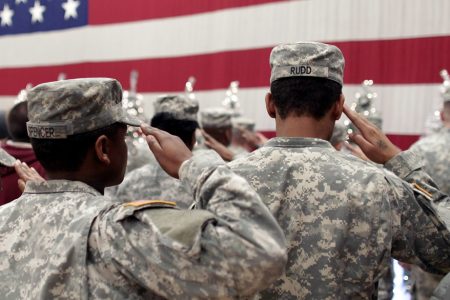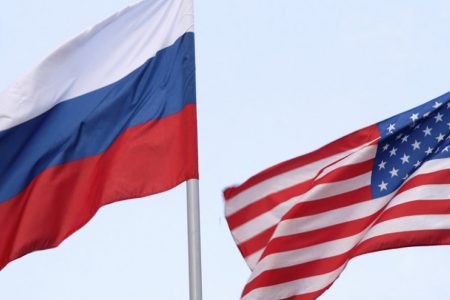A summit for the deterrent power of consensus
Many of the headlines, intros and tags of the last weeks compete in expressing or emphasizing the outmost importance of the highest level meeting of the North Atlantic Council to commence today, in Warsaw. At a time of political uncertainty and growing turmoil within and around Europe, this NATO meeting of the Heads of State is advertised as the most important summit in the post-Cold War era. So was the 2014 Summit in Newport, or the 2012 Summit in Chicago, or the 2010 Summit in Lisbon, with the list going on even up to the 1990 Summit in London.
Nonetheless, this is not to be construed in the sense of minimizing the importance of the Warsaw Summit. With the political and security landscape changing gradually, but quite swiftly, the opportunity rather than the grandeur of these transatlantic manifestations is relevant. From a blunt security and expectancy perspective, at the Wales Summit of two years ago, NATO was under more pressure than it is at the current one. The aggressive posture of Russia displayed just before the Summit, the operation in Afghanistan awaiting a new mandate, and the baptize of a new Secretary General determined many pundits to express disappointment with the stance taken by the 28 Nations.
Two years later, however, there appears to be confirmation that the directions adopted in Newport were actually crucial to what NATO plans to achieve in Warsaw. The 2014 Summit was preparatory to this one, setting deliverables for 2016, and preparing a fine-tuning from reassurance to deterrence and defense. With clear reflexes of maturity and consummate identity, NATO seems easily able to adapt to current challenges it faces. However, Europe faces a wearisome political crisis with the British-exit and the attempts to trigger EU profound reformation. Thus, the stakes are high especially in the political realm, where the deterrent power of the North Atlantic consensus champions the expectations.
In regard to the security challenges and threats of the status quo, just before the Summit the US Ambassador Douglas Lute, correctly assessed that “it’s a combination of Russia’s now more assertive, more aggressive actions to the East of NATO, […] and the civil war in Syria and the rise of ISIL in both Syria and Iraq” to the Southeast of NATO’s long border of 1,500 kilometers, which exposes especially Turkey. “Then directly to the South of NATO, you have the mass migration flows coming across the Aegean into the Balkans and from North Africa across the central Mediterranean into Italy.”
Following this line, the agenda produced by the Secretary General Stoltenberg shows that NATO has not been dormant during these two years, neither as a political group of 28 sovereign states nor as the treaty based military alliance nor as the international institution that is pushed by the Brussels and Norfolk bureaucracies. “The main message is that NATO is adapting to a new and more challenging security environment, to a more dangerous world”, signals the chief of the NATO HQ in an interview with Euronews, also explaining that the demarche of the Wales summit will uphold a ratio between collective defense efforts and projection of stability in the neighboring areas of the Alliance.
The Warsaw Summit is expected to follow-up on the return to collective defense and deterrence preoccupations, as the Rapid Action Plan’s implementation ought to have finished by today. Briefly, this equates to a forward military presence doubled by rapid reaction forces positioned on the Eastern and Southeastern flank, from Estonia down to Romania and Bulgaria. In addition, in the same spirit the Summit will mark the transfer of control and command from the US to NATO of the ballistic missiles defense capabilities developed in Romania – which will be part of a wider system including capabilities in Poland and Turkey. Despite still modest military complementarity, readiness is envisioned to be the main deterrent in this equation.
In terms of out-of-area preoccupation, NATO appears to keep in tune with its strategic configuration adopted in 2010. Hence, Resolute Support Mission in Afghanistan is expected to continue past 2016 with a US increased military presence and a funding commitment up to the 2020 horizon for the Afghan administration. Similarly, training and defense capacity building is to commence in Iraq, under the Alliance’s tutelage. Accounting the US drive in this direction, it appears that such actions represent the maximum of the North Atlantic involvement in supporting the international coalition that fights ISIL – besides, of course, the shy direct contribution to the coalition as regards the NATO AWACS meant for surveillance. Further defense capacity building may be directed toward Libya, a state also struggling in the fight against ISIL. However, this is possible rather than probable.
Besides, under the overarching aim of maintaining NATO borders secured by ensuring stability in their vicinity, the 28 Heads of State, joined by the Montenegrin one, will discuss Partnerships, with focus on Ukraine and the EU. Even though, worldwide Partnerships will be targeted by discussions or will even be consolidated, the preoccupations for the relations with Russia and Brexit will probably determine the mentioned choice.
The NATO-Georgia and NATO-Ukraine Commissions scheduled for this Summit will, for sure, represent somewhat preparatory meetings for the NATO-Russia Council expected in the reverberation of the event in Warsaw. Since the annexation of Crimea and aggressive presence of Russia in Eastern Ukraine, the focus of resources in response to Kremlin has been considerable, beyond the presented deterrence elements. Thus, NATO representation offices have been opened in Ukraine, political and security agreements have been negotiated, passed through the Ukrainian legislative, and signed by the parties. Moreover, it is somewhat conspicuous that NATO pursuing internal organizational reconfiguration with the Intelligence Unit raised to the level of division in Warsaw is significantly influenced by the need to address hybrid threats emanating from the East. The consensus on recognizing cyber space as an operational domain – the first of its kind – is also totem that during the past two years NATO was active in addressing challenges such as those met by the Ukrainians. The Atlanticist path for Ukraine is thus beckoned in spite of the reluctance to establish clear time frames.
Turning to the EU, it will be interesting to see what will come out of this Summit, given the fact that up to this point bureaucratic cooperation has mostly resulted in frustrations on both sites. Despite crisis management and military good practices in cooperating in the Mediterranean – with Warsaw certain to enhance this dynamism, NATO and EU have maintained separate tracks. However, under the burden of the UK leaving EU and the renewed talk to develop a European military, and security and defense strategy, calls for increased cooperation have been intensified. A hypothesis that can be drafted in this context is that NATO will become an even more important political forum, firstly, because of its wider composition, and, secondly, because of the US desire to actually enhance cooperation with the EU out of an interest to influence the presumptive reconfiguration of the project. In any event, with Europe lacking in unity and vision, it appears that for NATO the biggest challenge is to maintain cohesion at standards that would preclude revival of institutional identity crisis.
The Summits are expected to be problem solvers or huge shifts and revelations, but this shall not be the case since NATO has already acquired a configuration and a consummate identity that allows perfect adaptations, and nothing is actually encountered for the first time. The Warsaw summit is expected, almost unanimously, to augment both elements of force and dialogue, and to “demonstrate NATO’s unity and strength” as the Secretary General has announced on its eve. Therefore, at stake is the deterrent strength of the cohesion and the consensus of NATO. In other words, NATO has to demonstrate the capacity to keep the political will together and focus on the right issues.




